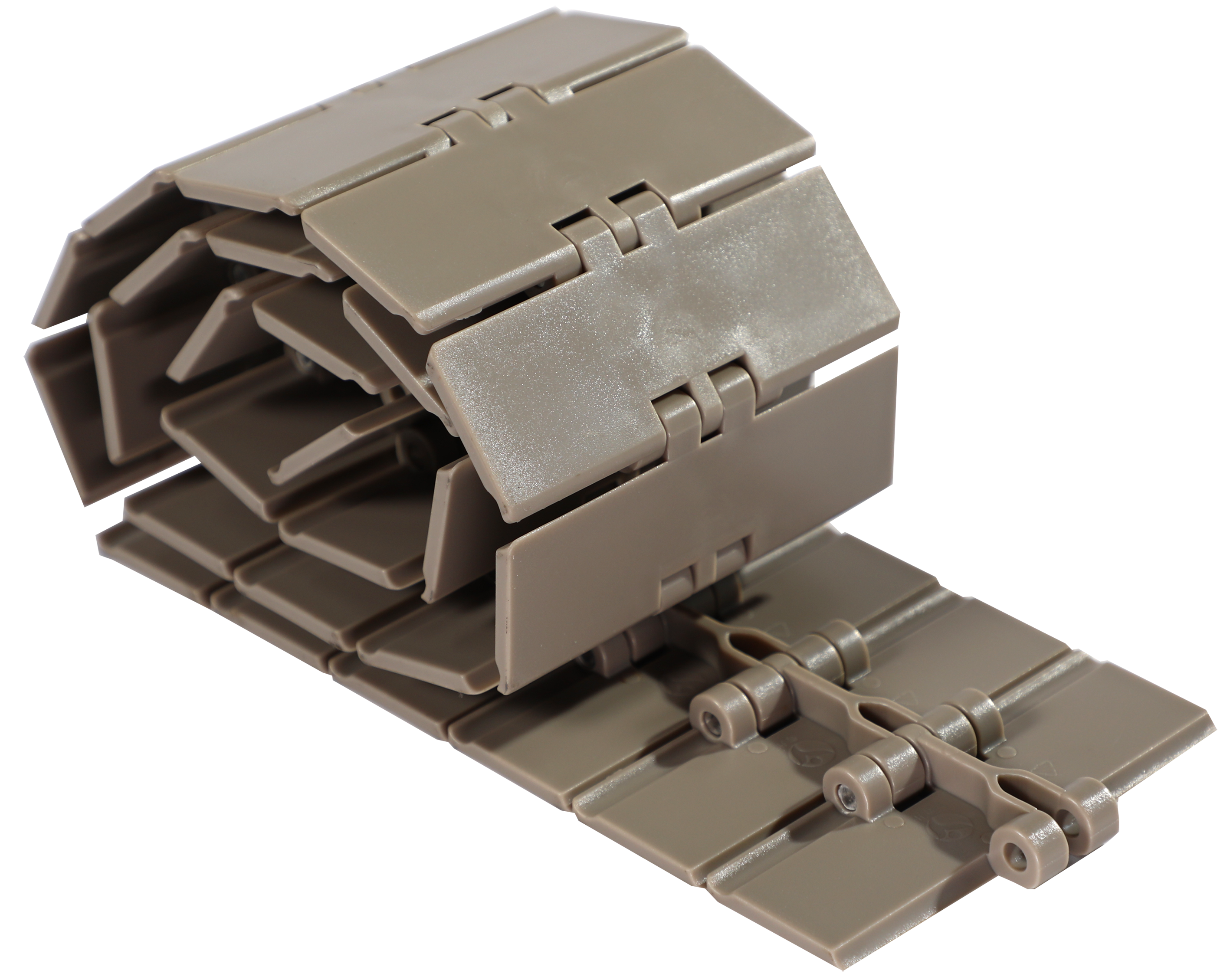Conveyor Table Top Chain: Everything You Need to Know
In the realm of industrial manufacturing, conveyor table top chains are critical in optimizing processes, improving efficiency, and upholding the high productivity standards essential for maintaining a competitive edge. These chains serve as the backbone of various industries, including food and beverage, pharmaceuticals, and packaging. This article explores the intricacies of conveyor table top chains, highlighting their different types, applications, advantages, and maintenance tips to ensure optimal performance.
Understanding Conveyor Table Top Chains
A conveyor table top chain consists of a mechanical assembly crafted for the horizontal or inclined movement of products along a specified route. Unlike conventional conveyor belts, these chains feature interlocking modular links, delivering a flexible, robust, and durable solution for product handling. Their design ensures accurate control of items and integrity under diverse conditions, accommodating high speeds and heavy loads effectively.
Essential Features of Conveyor Table Top Chains
-
Durability and Strength
These conveyor chains are engineered to endure significant mechanical stress, making them suitable for demanding industrial applications. Constructed from resilient materials such as stainless steel, acetal, and high-density polyethylene (HDPE), they offer excellent wear resistance. -
Flexibility
Thanks to their modular design, table top chains can easily accommodate a variety of conveyor configurations, including curves, inclines, and declines. -
Low Friction Surface
Featuring a smooth, low-friction surface, these chains ensure products move effortlessly along the conveyor, minimizing the risk of product damage. -
Hygienic Design
In sectors such as food and pharmaceuticals, these chains can be designed for hygiene, ensuring easy cleaning and compliance with safety regulations.
Varieties of Conveyor Table Top Chains
1. Stainless Steel Table Top Chains
Ideal for heavy-duty operations and environments facing high temperatures or corrosive materials.
Commonly utilized in the automotive, chemical, and food processing industries.
2. Plastic Table Top Chains
Lightweight and resistant to corrosion, suitable for applications requiring silent operation.
Widely used in pharmaceuticals and electronics.
3. Snap-On Chains
Designed with detachable top plates for simplified maintenance.
Particularly advantageous in food and beverage industries where frequent cleaning is necessary.
4. Multiflex Chains
Flexible options for complex conveyor configurations with multiple curves and directional changes.
Ideal for use in packaging lines.
Application Areas for Conveyor Table Top Chains
Food and Beverage Industry
Table top chains are frequently deployed in bottling, canning, and packaging tasks due to their hygienic surfaces and easy maintenance.Pharmaceutical Sector
They play a crucial role in the accurate and safe transportation of small, delicate items.Automotive Industry
The robust strength of stainless steel table top chains is vital for moving vehicle parts and assemblies.Packaging and Labeling
These chains are instrumental in high-speed operations, ensuring the smooth transport of boxes, cartons, and other packing materials.
Benefits of Utilizing Conveyor Table Top Chains
Enhanced Productivity
With minimized downtime and support for continuous operations, these chains boost throughput across various sectors.Customizable Options
Their modular design facilitates tailored configurations, meeting specific industry demands.Cost-Effective
Offering long-term value by reducing maintenance requirements and extending the lifespan of equipment.Reliable and Safe
Precision engineering and robust construction guarantee safe, consistent performance.
Maintenance Tips for Conveyor Table Top Chains
To ensure the safety and efficiency of your conveyor table top chains, consider the following maintenance strategies:
Regular Cleaning
Eliminate debris and residue that could negatively impact chain functionality, especially in food and beverage sectors.Proper Lubrication
Utilize the appropriate lubricant to mitigate friction and prevent wear on moving components.Frequent Inspection
Regularly inspect for damaged links, excessive wear, or misalignment, replacing worn parts swiftly.Alignment and Tension
Confirm that your chain is correctly aligned and tensioned to prevent uneven wear and enhance operational efficiency.Follow Manufacturer Instructions
Always adhere to the manufacturer's maintenance guidelines relevant to specific chain types and materials.
Choosing the Right Conveyor Table Top Chain
When selecting a conveyor table top chain for your operations, keep the following considerations in mind:
Material Suitability
Select a chain material that matches your operational environment, whether stainless steel for high temperatures or plastic for lightweight purposes.Loading Capacity
Evaluate the weight and dimensions of items to ensure the chain can efficiently manage the load.Operating Environment
Consider temperature, humidity levels, and exposure to corrosive or abrasive substances.Configuration Needs
Assess the design of your conveyor system, including curves, inclines, and straight runs.
Final Thoughts
Conveyor table top chains are essential components within contemporary industrial systems, providing flexibility, strength, and efficiency. With a diverse range of materials and designs available, they meet the distinct requirements of industries such as food processing, pharmaceuticals, and automotive. Investing in the appropriate conveyor table top chain and ensuring proper maintenance can greatly boost your operational efficiency and productivity.
- 0



